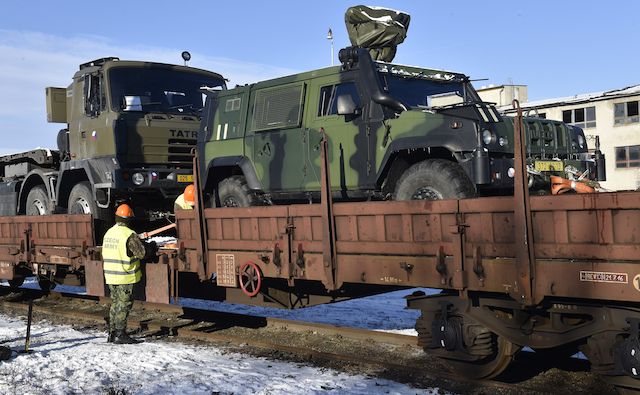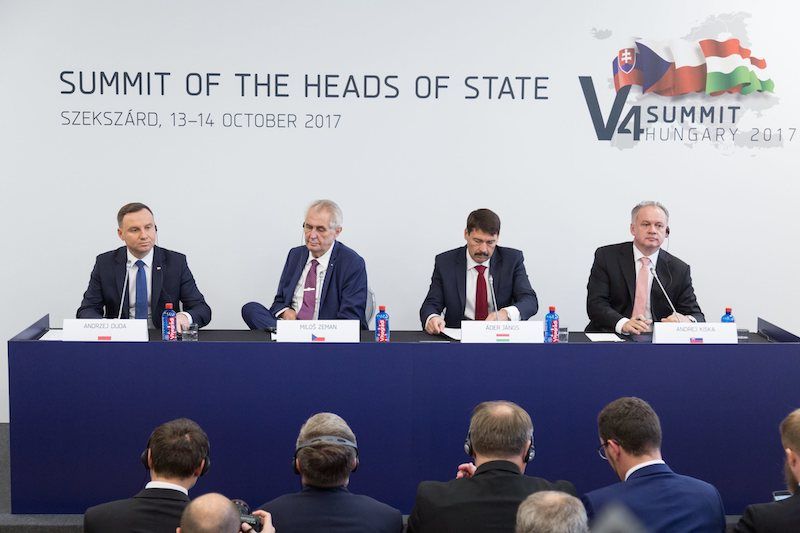The Visegrad Group and Europe’s security system: a story to watch
Although NATO and the EU are the leading actors shaping European security, smaller players are also performing important roles. The Visegrad Group is one of them. Its member governments, though, are increasingly perceived as Euroskeptic. Under adverse scenarios, this could lead to political and security problems for the EU.

In a nutshell
- The Visegrad Group helped overcome the Cold War divide in Europe
- It also played an active role in updating the EU’s security strategy in the context of Russia’s growing assertiveness
- The group is now often charged with becoming a “mini Trojan horse” for the Kremlin
There are two leading actors shaping Europe’s security system: NATO and the European Union. But there are also other, smaller players performing important roles. Undoubtedly, the Visegrad Group is one of them. Lately, however, its member governments have come to be perceived in Brussels and some European capitals as euroskeptic and veering away from European standards in internal policies. Under adverse scenarios, this perception could create political and security problems. The development warrants a closer look at how the Visegrad states have contributed to Europe’s current security system and what role they may play in the future.
Established in 1991, the Visegrad Group originally consisted of Poland, Hungary and Czechoslovakia. Since the peaceful dissolution of Czechoslovakia into the Czech Republic and Slovakia in 1993, the group comprises four Central European states, often referred to as the V4.
The organization’s original mission was to facilitate the accession of Central and Eastern European countries into the Western structures after the Cold War. Its history can be divided into three distinct phases: the accession period (1991-2004), during which the V4 was considered very helpful to the EU; the integration period (2005-2014), when the group was seen as moderately necessary; and the euroskeptic period (since 2014/2015). During this last phase, the V4 has been rocking the EU boat by raising questions about the community’s direction – which, in turn, has sparked charges that its members are applying the brake to the integration process.
The accession stage
The Visegrad Group started as a sort of “political task force” created soon after the Soviet bloc’s collapse to help the Central European countries win admission into NATO and the EU. In essence, member governments supported each other in trying to meet the accession standards and promoting their progress in this area to help sell the Western governments on the expansion project.
I remember from the early 1990s, when, first as a professor at the National Defence University in Warsaw, and then a director at Poland’s National Security Bureau, I traveled to the United States on official business and was encouraged to help build such a regional body in Central Europe. Later on, we were urged to continue and expand the Visegrad Group’s activity.
The Visegrad Group played a significant, positive role in the eradication of the Cold War divide in Europe.
In the context of the aspirations of the Central European states to join NATO, the initiative was helpful to those in the West, especially in the U.S., who supported this process and needed to sway the decision makers, especially in the U.S. Congress. Their task was easier when they could demonstrate that not a loose constellation of former Soviet-bloc states, but an integrated body of them that shared European values was determined to join the Western community of nations.
This is why they worried in Western capitals when, between 1993 and 1998, there was a snag in the functioning of the V4. At that time, the Czech Republic thought it was not worth taking part in regional initiatives: Why label yourself as part of Central and Eastern Europe when you are already embedded in the West? Slovakia, meanwhile, fancied itself as a “link” between the West and Russia.
Despite temporary backtracking, it can be said that the Visegrad Group fulfilled its mission and played a significant, positive role in the eradication of the Cold War divide in Europe. It provided Western leaders with proof that a transformation from communism to liberalism, from authoritarianism to democracy, from a centralized to a free-market economy, was possible.
Integration stage
After Central and Eastern European states joined NATO (Poland, Hungary and the Czech Republic in 1999, and seven more countries in the region five years later), and especially after the 2004 and 2007 inclusion of these states into the EU, the Visegrad Group lost its original purpose.
In an army, task groups are disbanded after they fulfill their missions. In politics, things are different. A new purpose was sought for the Visegrad Group. So a new, if less flashy, raison d’etre emerged for the V4 members – mutual support in the integration processes within NATO and the EU, as well as jointly bringing Central Europe’s problems to the EU’s attention.
From the standpoint of security, the Visegrad’s joint support for the Eastern Partnership and the aspirations of other nations in the region to join NATO were particularly noteworthy. One of the V4’s flagship initiatives in the defense field has been the idea of the Visegrad Battle Group. Seen by many at NATO headquarters as a go-nowhere project, it has suffered repeated delays. At first, the battle group was supposed to be ready in 2016; now the date has been moved to 2019.
A series of strategic workshops were held to draft the assumptions of a new strategy.
Another initiative, jointly launched by the Visegrad Group presidents (on Poland’s urging) in 2011, related to the need to amend the EU security strategy in the context of Russia’s growing assertiveness. The idea was to put together secretaries from the EU Council’s Security Committee and presidential advisors on security from all EU member states, forming a deliberating body that could act as a de facto EU security council. A series of strategic workshops were held to draft the assumptions of a new strategy. The Baltic states joined the process in 2014.
The initiative played a positive role. After strong initial resistance, the work on updating the EU’s security strategy started and the EU finally adopted the new document in 2016. Of course, Russia’s President Vladimir Putin needs to be given credit for accelerating this process with his 2014 aggression against Ukraine.
Summing up the Visegrad Group’s activity in the second period: for lack of an apparent external goal, it focused on internal cooperation among the member states. In politics, such interaction is valuable in itself, as it helps advance practical goals.
Euroskeptic stage
Russia’s invasion of Ukraine, which closed the post-Cold War era in Euro-Atlantic security relations and again put Russia and the West on a confrontational footing, also caused considerable trouble for the Visegrad Group. Significant differences have surfaced between Poland and other members of the group, especially Hungary, in their approach to Russia and Ukraine. These differences made it practically impossible for the four states to develop common positions on security issues in relations with Moscow.

However, some new areas of commonality appeared later, especially after the change of government in Poland in 2015. Today, the V4 features mostly euroskeptic ruling elites. Their similar reaction to the EU migration crisis (seen in the West as flouting solidarity) turned out to be an effective glue for the Visegrad Group. Similarly, perceived migration risks also have reconnected the member states.
Scenarios
Summing up the reflections on the functioning of the Visegrad Group: it played an important role during the accession period and a less critical, yet useful role during the integration phase. Currently, the V4 is often accused of being a “mini Trojan horse” for the Kremlin, which cannot be good in the context of a new Cold War between Russia and the West.
Therefore, what future V4-EU scenarios can be drawn from the standpoint of European security? Generally speaking, there are two apparent scripts: an escalation of the conflict, risking the Western alliance’s cohesion, and a change of tack by the Visegrad Group. Both depend on internal political developments within the V4 countries, but not exclusively.
If the current euroskeptic and occasionally pro-Russian elites continue in power for many years to come, their increasingly close political cooperation in the Visegrad Group could lead to unfortunate side effects. The group may inadvertently put its own strategic security, and that of the EU, at even greater risk.
First, the anti-integration paradigm of today’s V4 could accelerate the EU’s process of morphing into a union of “many speeds.” This would push most of the countries of Central Europe to, at best, unifying Europe’s periphery, and at worst prompt them to exit the European community. That would substantially undermine Central Europe’s security, especially for Poland, which would find itself in a gray zone between the West’s shrinking influence and Russia’s expanding sway. The Kremlin’s paramount goal has been to restore a buffer zone of vassalized states between Russia and the West.
A favorable scenario hinges on the possibility that the governing forces in the Visegrad countries adopt more nuanced stands vis-a-vis the EU, or pro-European political groups return to power. Then, the issue of a new mission for the V4 would return. Presumably, it could be built around the need to minimize the risks of the Visegrad area’s marginalization within the Western security system.
It must be said emphatically at this point that these two scenarios depend not only on the Visegrad countries. Equally, perhaps even more, important will be whether the EU as a whole is able to put forth a new, postcrisis vision of itself – sufficiently credible and attractive to convince skeptics and seduce the Central European societies to cast their lot again with the rest of Europe.








